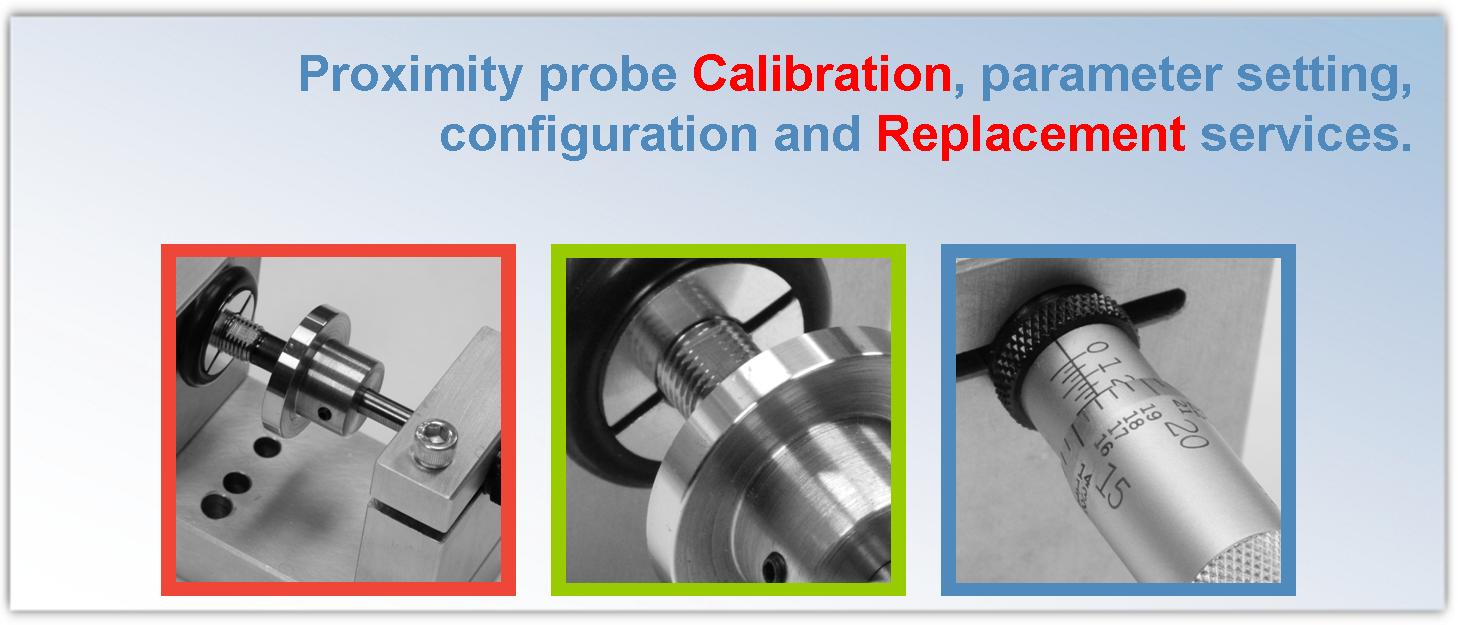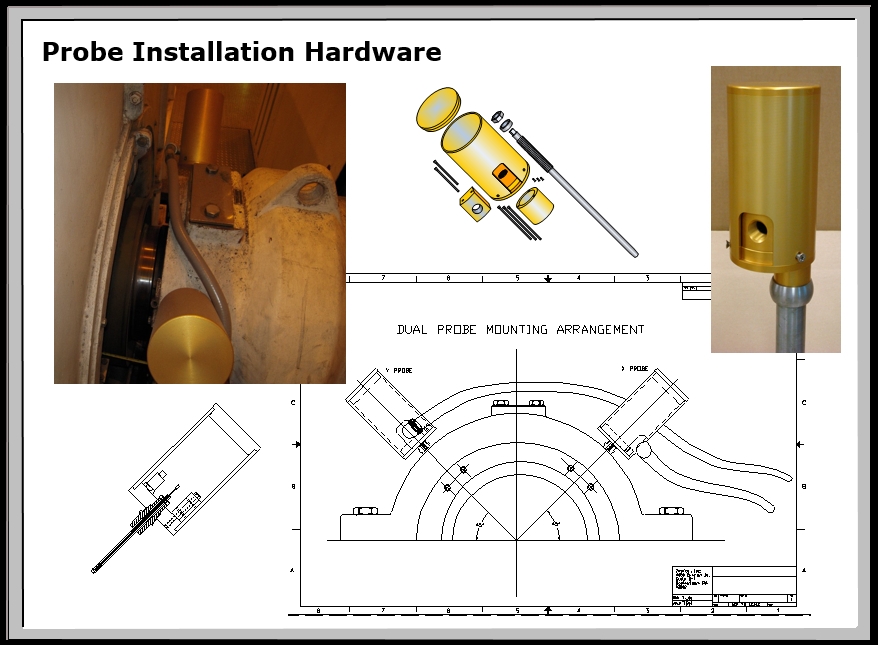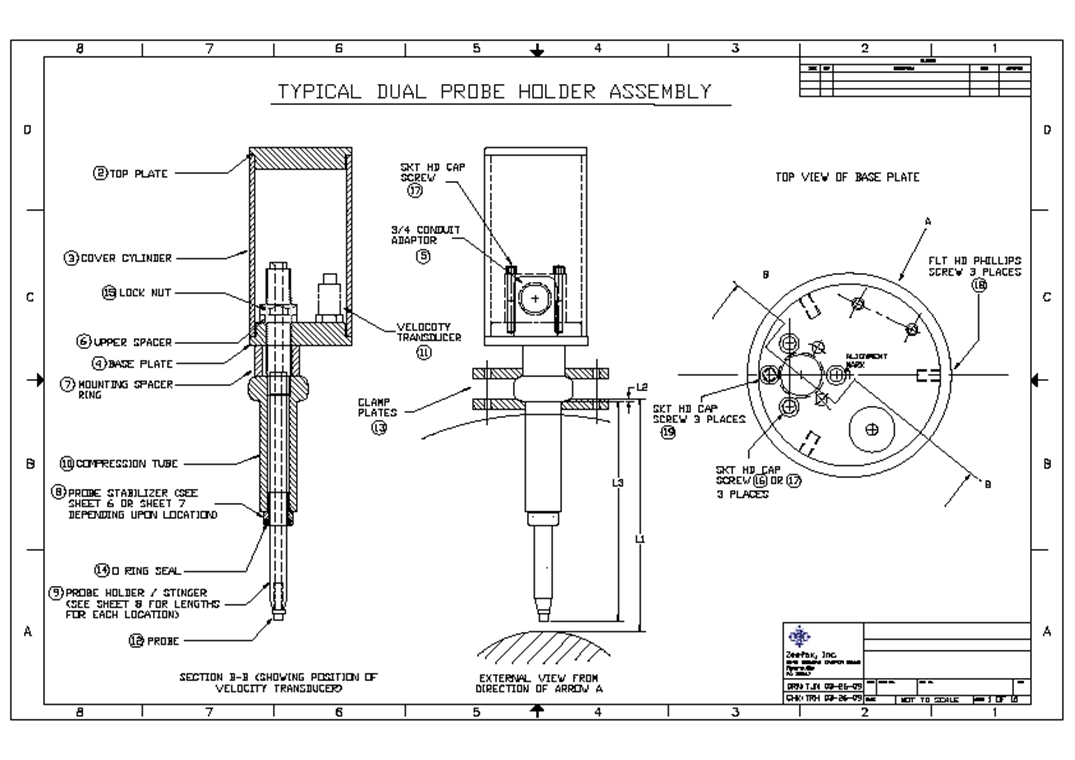Sampling rate
The number of readings an A/D converter takes per second or per minute.
Sampling period
The time interval between observations.
Scale factor
The factor by which the number of scale divisions indicated or recorded by an instrument should be multiplied to compute the value of the measured variable.
Screening
The process of stressing products so that defective units can be identified, then repaired or replaced. A winnowing out.
Sensing element
The element which is directly responsive to the value of the measured variable.
Seismic
Having to do with earth motion, as earthquakes. A kind of sensor that depends upon the inertia of an internal mass to generate a signal, as an accelerometer or velocity pickup. / Refers to an inertially referenced measurement or a measurement relative to free space.
Seismic Transducer
A transducer that is mounted on the case or housing of a machine and measures casing vibration relative to free space. Accelerometers and velocity transducers are seismic.
Self-induced vibration
Also called self-excited vibration, results from conversion of non-oscillatory energy into vibration, as wind exciting telephone wires into mechanical vibration.
Sensitivity. Of a mechanical-to-electrical sensor or pickup, the ratio between electrical signal (output) and mechanical quantity (input).
Sensitivity
The minimum change in a physical variable to which an instrument can respond; the ratio of the change in output magnitude to the change of the input which causes it after the steady-state has been reached.
Sensor
An element or device which detects a variable by receiving information in the form of one quantity and converts it to information in the form of that or an other quantity. (see also Transducer)
Setpoint
A variable, expressed in the same units as the measurement, which sets either the desired target for a controller, or the condition at which alarms or safety interlocks are to be energized.
Shaker
An electro-mechanical or electro-hydraulic machine, usually operating under closed-loop-control, which simulates the vibration signatures experienced in real life situations. Used in accelerated life testing for equipment and systems subject to vibration in normal operating conditions.
Shielded twisted pair (STP)
Cable construction that includes an external grounded shield as well as twisting on a regular basis to help minimize noise interferences.
Shock Machine or Shock Test Machine
An electro-mechanical or electro-hydraulic device for subjecting equipment to controlled and reproducible mechanical shock pulses.
Shock pulse
An event that transmits kinetic energy into a system in a relatively short interval compared with the system’s greatest natural period. A natural decay of oscillatory motion follows. The event is usually displayed as a time history, as on an oscilloscope.
Shock pulse, classical
An ultra-simple shock pulse, one that is never seen in the “real world” yet is often specified in test requirements. Such pulses contain much more low-frequency energy than do “real world” shock events. Such pulses are said to be “mathematically tractable”. They have been studied to death. Examples include the half-sine pulse, the square pulse, the triangular pulse, the trapezoid and the saw tooth. The first four, which are symmetrical, are being specified less with each passing year. Only the saw tooth is required in MIL-STD-810F.
Shock pulse, haversine
A practical variation on the obsolete half-sine pulse, whose abrupt transitions at beginning and end cannot be achieved in test labs. Practical testing requires some rounding, and the result in called a haversine pulse. Another definition: an inverted cosine offset by half its amplitude. A continuous haversine resembles a sine wave.
Shock response spectrum (or SRS)
A plot of maximum responses of SDoF systems vs. their natural frequencies, as they respond to an applied shock.
SI (Systeme International)
Decimal system of units
SI Exponents
SI Units
Sidebands
Signal
A variable that carries information about another variable that it represents. Signal-to-noise ratio: Ratio of signal amplitude to noise amplitude. The ratio of the overall RMS signal level to the RMS noise level, expressed in dB. For sinusoidal signals, amplitude may be peak or rms. Single-ended (SE): An analog input that is measured with respect to a common ground.
Signal Amplifier (see also Signal conditioner)
An amplifier following a sensor, which prepares the signal for succeeding amplifiers, transmitters, readout instruments, etc. May also supply sensor power.
Signal Conditioner
A device placed between a signal source and a readout instrument to change the signal. Examples: attenuators, preamplifiers, charge amplifiers.
Signal-to-Noise Ratio (SNR)
The ratio of the amplitude of the desired signal to the amplitude of noise signals at a given point in time. The larger the number the better.
Signature
Term usually applied to the vibration frequency spectrum which is distinctive and special to a machine or component, system or subsystem at a specific point in time, under specific machine operating conditions, etc. Used for historical comparison of mechanical condition over the operating life of the machine.
Simple harmonic motion
Periodic vibration that is a sinusoidal function of time.
Sine Output
Single-degree-of-freedom system (SDOF)
Single-Ended Input
An analog input measured with respect to a common ground.
Slew rate
The maximum rate at which an instrument’s output can change by some stated amount.
Slow Roll Speed
Low rotative speed at which dynamic motion effects from forces such as imbalance are negligible.
SNR
see Signal-to-Noise Ratio.
Solid-state sensor
One which has no moving parts.
Soft failure
A product under test ceases to operate correctly, but resumes correct operation when the stressing environment is eased. Differs from hard failure.
Sound
(1.) An oscillation in pressure, capable of evoking the sensation of hearing. (2.) The sensation of hearing
Sound intensity
In a specified direction, the average rate of sound energy flow through a unit area perpendicular to that direction.
Sound level
The quantity in dB measured by a standardized Sound Level Meter. The reading is 20 log10 of the ratio between a given sound pressure and 20 micro-pascals.
Source
A D/A converter output channel
Source follower
A device for converting a high impedance electrical signal to low impedance. Also referred to as an “impedance converter.” Generally has a voltage gain of unity.
Source Impedance
The combination of resistance and reactance that a source presents to the input terminals of a measuring instrument.
Spall
A flake or chip of metal; removed from one of the races of a rolling-element bearing. That bearing is nearing the end of its useful life.
Span
The algebraic difference between the upper and lower range values expressed in the same units as the range.
Specifications
Documents (the USA military service had as many as 28,000 specifications) that describe products or services, for the purpose of procurement. Differs from standards.
Spectral map
A three-dimensional plot of amplitude (Z axis) vs. time (or shaft speed) (Y axis) vs. frequency (X axis) / A three-dimensional plot of the vibration amplitude spectrum versus another variable, usually time or rpm. / A three-dimensional plot of amplitude (Z axis) vs. time (or shaft speed) (Y axis) vs. frequency (X axis).
Spectra
The plural of Spectrum
Spectrum
See also frequency spectrum. The spectrum is the result of transforming a time domain signal to the frequency domain. It is the decomposition of a time signal into a collection of sine waves.
Spectrum Analyzer
A spectrum analyzer is a device used to examine the spectral composition of some electrical, acoustic, or optical waveform. Often, it measures the power spectrum. SignalCalc systems are an example of a modern high speed digital spectrum analyzer. / An instrument which displays the frequency spectrum of an input signal, usually amplitude vertical vs. frequency horizontal. / An instrument which displays the frequency spectrum of an input signal.
Squeak
A sound resembling that of an un-lubricated hinge. A sound made by PVC or other material rubbing on glass, i.e. a windshield.
Squeak & Rattle
A term given to annoying noises such as those in a vehicle caused by plastic parts rubbing etc.
Stable Averaging
(Linear) An averaging method wherein all constituents are equally weighted; the amplitude is continuously normalized to the number of constituents currently captured.
Stability
The ability of an instrument or sensor to maintain a consistent output when a constant input is applied. Steady-state: A characteristic of a condition, such as value, rate, periodicity, or amplitude, exhibiting only negligible change over an arbitrary long period of time.
Standards
Documents (the USA military services had as many as 1,700 standards) that prescribe engineering disciplines, impose particular management practices, reporting and auditing requirements. Differ from specification.
Standard deviation
A statistical term: the square root of the variance , i.e., the square root of the mean of the squares of the measured deviations from the mean value.
Standing wave
A wave that is characterized by lack of vibration at certain points (nodes), between which are areas of maximum vibration (antinodes). Standing waves are produced at certain forcing frequencies when the resulting resonant vibratory response is confined within boundaries, as in the vibrating string of a musical instrument or the wing of an airplane or the whip antenna on your automobile. Also called “stationary wave”.
Stationary Signal
A stationary signal is a signal whose average statistical properties over a time interval of interest are constant, and it may be deterministic or not. In general, the vibration signatures of rotating machines are stationary.
Steady state vibration
Periodic vibration for which the statistical measurement properties (such as the peak, average, RMS and mean values) are constant.
Stepped Sine
Used for measuring the stability of closed loop servo systems and is one of many different techniques for structural excitation and frequency response function measurement.
Stepped sine testing
Sine shaking in a series of dwells. Frequency is incrementally increased or decreased.
Step stressing
Increasing stresses in a series of pre-selected increments.
Stiffness
The ratio of force (or torque) to deflection of a spring-like element. / The spring-like quality of mechanical and hydraulic elements to elasticity deform under load. / The ratio of change of force (or torque) to the resulting change in deflection of a spring-like element. It is the opposite of compliance.
Strain
The physical deformation, deflection, or change in length resulting from stress (force per unit area). / The ratio of the change in length to the initial unstressed reference length of an element under stress.
Strain-gauge transducer
A changing-resistance sensor whose signal depends upon sensitive element deformation. In an unbounded wire strain-gauge accelerometer, inertia affects a mass supported by ni-chrome wires; the wires change resistance in proportion to acceleration. The term may include piezoresistive accelerometers.
Strain gauge
Sensor whose resistance varies with applied force. A measuring element for converting force, pressure, tension, weight, etc., into a change in electrical resistance.
Stress
Intensity of applied load, usually at the site of a failure.
Stress Screening
A modern electronics production tool for precipitating latent defects such as poorly-soldered connections. Utilizes random vibration + rapid temperature ramping.
Structural Modification
Mathematically determining the effect of changing the mass, stiffness, or damping of a structure and determining its new modal parameters. A modal analysis provides, in essence, a mathematical model of the structure. This model can be manipulated to determine the effect of modifications to the structure. The modal model can be generated either experimentally or using a finite element program.
Sub-harmonic
A sinusoidal quantity having a frequency that is an integral sub-multiple (x1/2, x1/3, etc.) of a fundamental (x1) frequency. / Sinusoidal quantity of a frequency that is an integral sub-multiple of a fundamental frequency.
Sub-synchronous
Components of a vibration signal whose frequency is less than 1´ shaft speed. / Component(s) of a vibration signal which has a frequency less than shaft rotative frequency.
Synchronous Sampling
In a Dynamic Signal Analysis, it refers to the control of the effective sampling rate of data; which includes the processes of external sampling and computed re-sampling used in order tracking.
Supply current
The typical current that must be supplied to a sensor (along with the supply voltage).
Swept Sine
A sine signal of linearly varying frequency.
Swept-sine testing
Sine shaking whose frequency is smoothly and continuously varied. Commonly required for sequentially identifying resonances. By contrast, see stepped sine testing.
Synchronous
Vibration components (on rotating machinery) that are related to shaft speed. / An event or action that is synchronized to a reference clock.
Synchronous Averaging
A type of signal averaging where successive records of the time waveform are averaged together. This is also know as time domain averaging. The important criterion is that the start of each time record must be triggered from a repetitive event in the signal, such as once per rev. The triggering assures that the phase of the waveform components that are synchronized with the trigger are the same in each record. Then in the averaging process, these in-phase components will overwrite in the input buffer and will remain in memory, while the rest of the signal components will gradually average out because of their random relative phases. The technique is excellent for extracting signals from noisy environments.
Synchronous sampling
Control of a computer’s rate of data sampling to achieve order tracking.
System
A composite of equipment and skills, and techniques capable of performing or supporting an operational role, or both. A complete system includes all equipment, related facilities, material, software, services, and personnel required for its operation and support to the degree that it can be considered self-sufficient in its intended operational environment.
System effectiveness
(a) For repairable systems and items: the probability that a system can successfully meet an operational demand within a given time when operated under specified conditions.
(b) For “one-shot” devices and non-repairable items: the probability that the system will operate successfully when called upon to do so under specified conditions.





